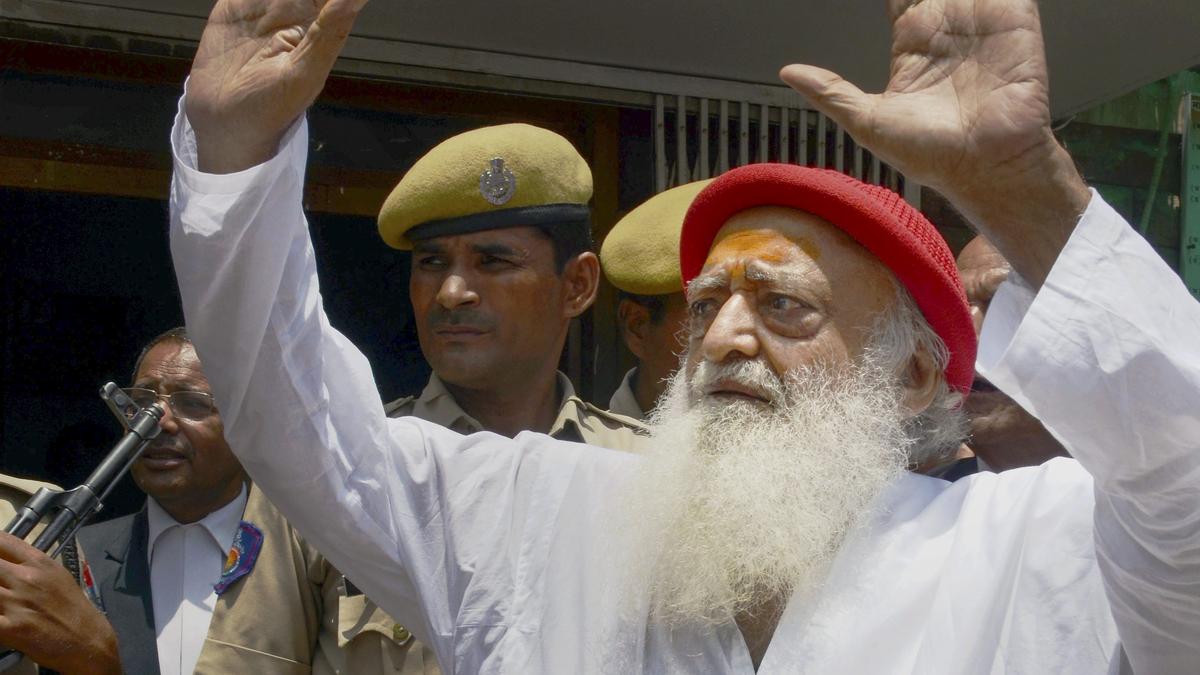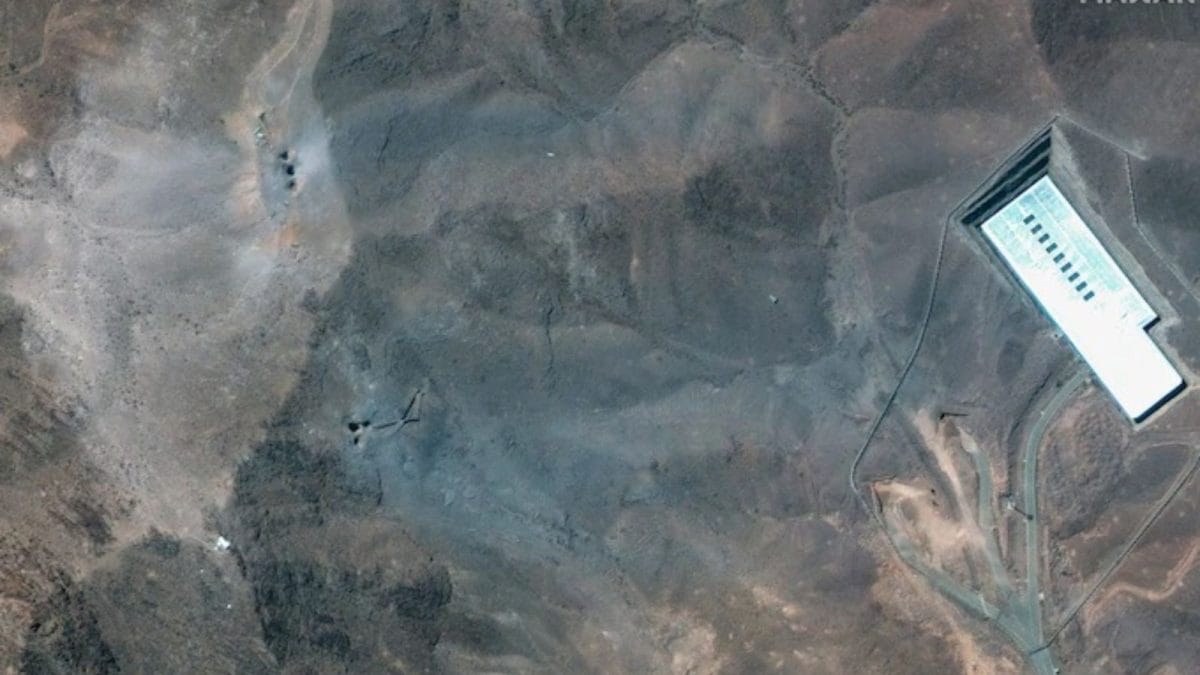Except for the gentle gush of rainwater cascading through a crystal-clear rivulet outside her window, Daisy’s home ar Ainkombu, a few metres from the Pala-Thodupuzha road, sits in total silence.
Flanked by rolling green hills on one side and a patchwork of farmland on the other, the view could easily grace a postcard. But for Daisy, 60, living alone in the house she once built with her late husband Kariyachan, this silence is far from peaceful.
Her children now live far away. Days slip by quietly, broken only by the occasional chirping of birds and rustling of leaves in the breeze. But now, what breaks the silence are the memories that keep popping up from two decades ago.
In her backyard, half-buried in the thick undergrowth, lies a moss-covered boundary stone planted by railway surveyors a few years ago. To Daisy, it’s a marker of promises unkept.
Since the day it appeared, her life has taken a turn. Her life got stuck abruptly. She is unable to sell the holding or use it as collateral. Her home, like her life, remains trapped in the shadow of a railway line that never came. That project is the Sabari rail line, a long-envisioned route meant to connect Angamaly to the pilgrimage town of Sabarimala through the rubber-growing areas of central Travancore.
Daisy’s land was once earmarked for Ramapuram railway station, which was expected to serve six panchayats in Meenachil taluk. Nearly 80% of her property, including farmland and polders, was marked for acquisition. “This land was the hub of the protests,” she says, her gaze fixed on the stillness beyond her doorstep.
“Now it’s all gone and quiet. People are tired. We just want clarity. Are we staying? Or are we leaving?” she asks. The protests started after they marked the rail line through the area. Her husband, Kariyachan, was at the forefront of the agitation. “But that was so long ago. Nobody is opposing it now. We just want to know what comes next,” says Daisy in a disillusioned tone.
Just a few metres away, another life remains suspended in uncertainty. Jose Joseph, 75, tends to rows of rubber saplings at Kavalathil Rubber Nursery, which he has nurtured for over four decades. Unlike Daisy, he is less concerned about losing the land but troubled by the agonising uncertainty the proposed project has forced on their lives.
“My house is on the alignment of the rail line. So are my children’s,” he says. “We built our lives here. If the railway is coming, let them say it. Should we stay or move?”
For more than a quarter century, that question has loomed over nearly 5,000 families across the 70-km stretch of the rail project (from Kalady to Ramapuram) whose properties have been surveyed and marked. Some properties were surveyed on foot, others from air, but all remain in limbo. No one can build, sell or mortgage as all transactions related to the property have been stalled. Life is paused, awaiting a future that never arrives.
At the other end of the line, things are no better. Near the Cochin international airport, Kalady railway station, the only station built under the project in its initial phase, stands deserted. Weeds have overgrown the platform. Even local people seem to have forgotten about the existence of the station.
Across the Periyar river at Okkal, M.P. Vishwanathan Nair’s house stands as another casualty of an ambitious project that never materialised. A former non-resident Keralite, he had hoped to expand his modest 900 sq ft home. But the dream collapsed before it could take off.
“By the time I got back, revenue officials had marked the land for the project. The railway line was to cut right through my holding,” he recalls. “They said I wouldn’t get compensation for any new work. So, I left the house unaltered. It’s been more than 20 years,” he says.
Though he tried to sell off the holding, potential buyers walked away on learning about the land’s status. A few years later, he approached the Revenue department seeking compensation. Officials returned his application without offering any explanation.
Unable to endure the uncertainty, he joined a hunger strike outside the same office. It lasted 21 days before being halted by pandemic restrictions. Now, there’s a flicker of hope.
Recently, Union Railway Minister Ashwini Vaishnaw and Kerala Chief Minister Pinarayi Vijayan agreed to resume land acquisition for the project.
V. Abdurahiman, Kerala Minister in charge of Railways, says a few issues related to the cost-sharing formula between the Centre and the State government and administrative matters are yet to be resolved. “The project is finally moving. We are awaiting a final intimation from the Railways by the first week of July,” he says.
“Since the alignment was fixed years ago, there’s no need to change it and trouble people again. If all goes well, land acquisition will be completed within a year,” he says.
But the numbers tell a story of massive delay.
Of the 111-km-long route (including land where physical survey has not been done), just seven kilometres of tracks has been laid. Besides, the station near Kalady, a lone bridge over the Periyar river stands as the project’s only completed structure. Sanctioned in the 1997-1998 Union Budget, the project has seen only 24 ha acquired out of the required 303 ha. The original estimate of ₹550 crore has now escalated to nearly ₹4,000 crore.
“The vision was always clear,” says former Union Minister P. C. Thomas, who first proposed the project. He believes it could transform regional economies from plywood and rice mills in Perumbavoor and Kalady to pineapple farming in Vazhakulam and tourism in the high ranges.
“It would open export routes for crops such as pineapple, cardamom, pepper, and rubber,” he says. “But we’ve lost time, resources, and trust.”
Along the route, 11 Sabari railway action councils were formed, which eventually merged to form the Sabari Railway Central Action Council.
Towns such as Thodupuzha, Muvattupuzha, Kothamangalam, and Perumbavoor became protest sites, where people, disheartened by years of uncertainty over displacement and financial crisis caused by the freezing of land transactions, took to the streets. The matter even reached the Kerala High Court, which expressed dissatisfaction over the prolonged delay. Yet, the project failed to take off.
Jijo Panachinani, secretary of the action council, says the damage caused by expired acquisition notices has been deep and personal. “More than 5,000 families were affected. The notifications are gone, but the consequences remain,” he says.
“People couldn’t mortgage or sell their holdings. Some families broke up over partition disputes. Many were forced to turn to private lenders when banks refused their land as collateral.”
Much of the delay stemmed from the disagreements between the Union and the State governments over funding. In 2015, the Congress-led United Democratic Front government agreed to share the cost of the project and signed an MoU with the Railways.
The Communist Party of India (Marxist)-led Left Democratic Front government, after withdrawing from the MoU in 2016, agreed to rejoin it in 2021. However, it insisted that the State’s share of the project cost be excluded from its borrowing limit. It remains unclear whether this issue has been resolved.
For R. Manoj, a lawyer from Pala, the plight of the affected families became a personal mission. In 2007, he visited every local body along the alignment, urging them to pass resolutions in support of the project.
“But then puny political tussles began,” he says. “Suddenly, there were objections to the alignment through Pala and Poonjar. What began as a people’s movement got entangled in politics and lost its steam.”
Tomy Thengumpillikunnel, a 69-year-old activist from Choondacherry, near Pala, led a hunger strike that lasted nearly four years from 2011. Like many others, it too faded into silence.
“Our protest was against the line cutting through our land,” he says. “Now, even with talk of the revival of the project, no one cares about it.”
Dijo Kappen, chairperson of the action committee, believes the line could revolutionise rail connectivity in Kottayam, Idukki and Ernakulam districts. With 14 new stations proposed, it could bring pilgrims to Sabarimala and provide rail connectivity to the proposed Sabarimala airport, while linking remote areas to the wider economy.
“In any case, this project offers a far more feasible alternative to the Chengannur–Pampa rail route, which is significantly more expensive and designed solely to serve Sabarimala pilgrims,” he asserts.
Kappen also points out that extending the line up to Balaramapuram in Thiruvananthapuram will create an alternate rail corridor to the State capital. Kerala has also submitted a proposal to connect the Sabari line with Thiruvananthapuram and the Vizhinjam seaport, he notes.
The government has asked the Collectors of Ernakulam, Idukki, and Kottayam to resume land acquisition for the project. The government order for acquiring land is expected soon.
Back in Kochi, Vishwanathan Nair now lives with his daughter Sharika. “My house at Okkal became uninhabitable. I had to shut my shop, my only source of income, and move here,” he says softly. “Someday, the project will move ahead and I will get justice.” His voice falters, but hope shines in his eyes.
And the wait continues for thousands of others like him, caught in the same silence, carrying the same unanswered questions.



.png)
.png)
.png)
















 5 hours ago
5
5 hours ago
5








 English (US) ·
English (US) ·